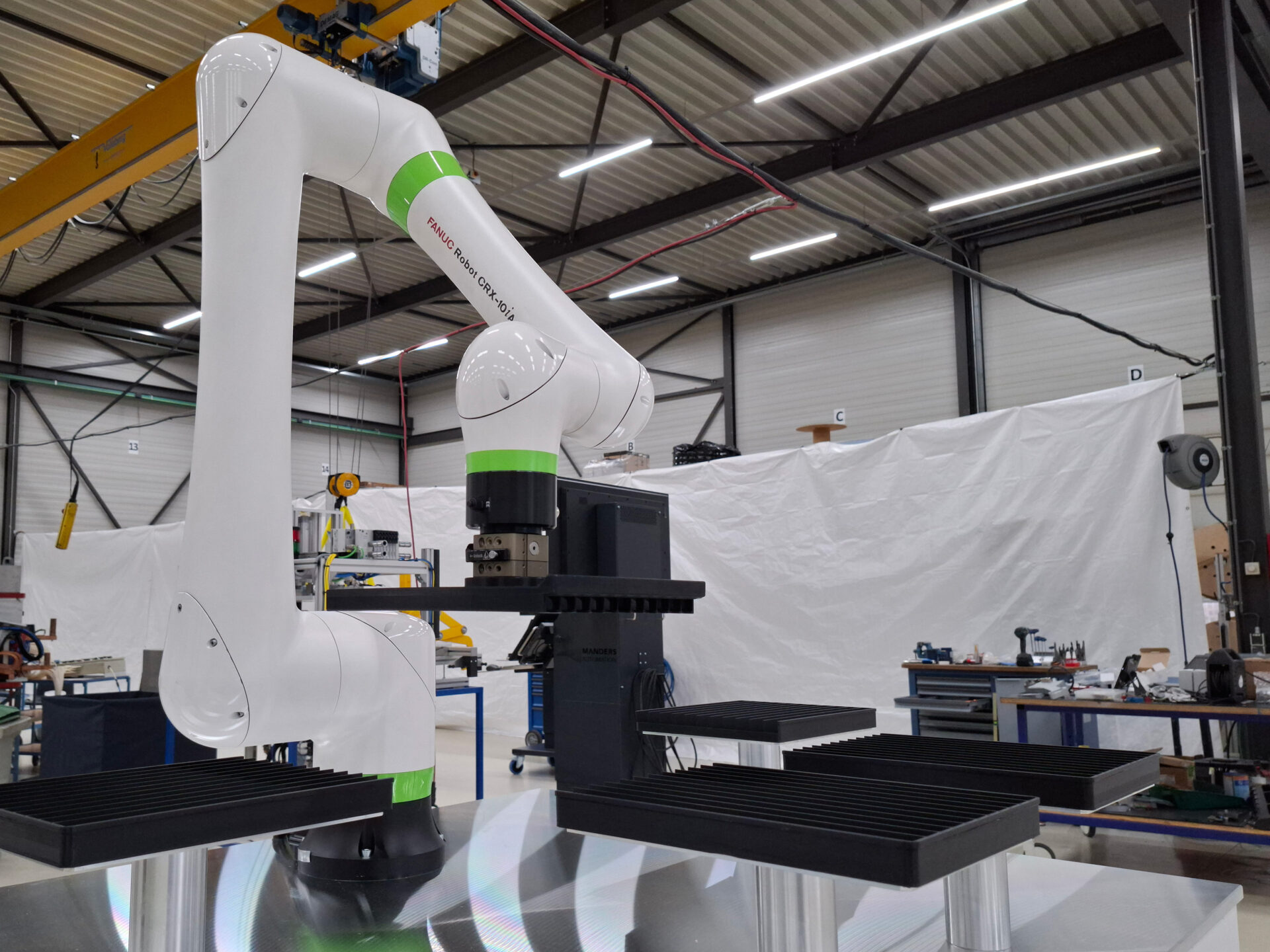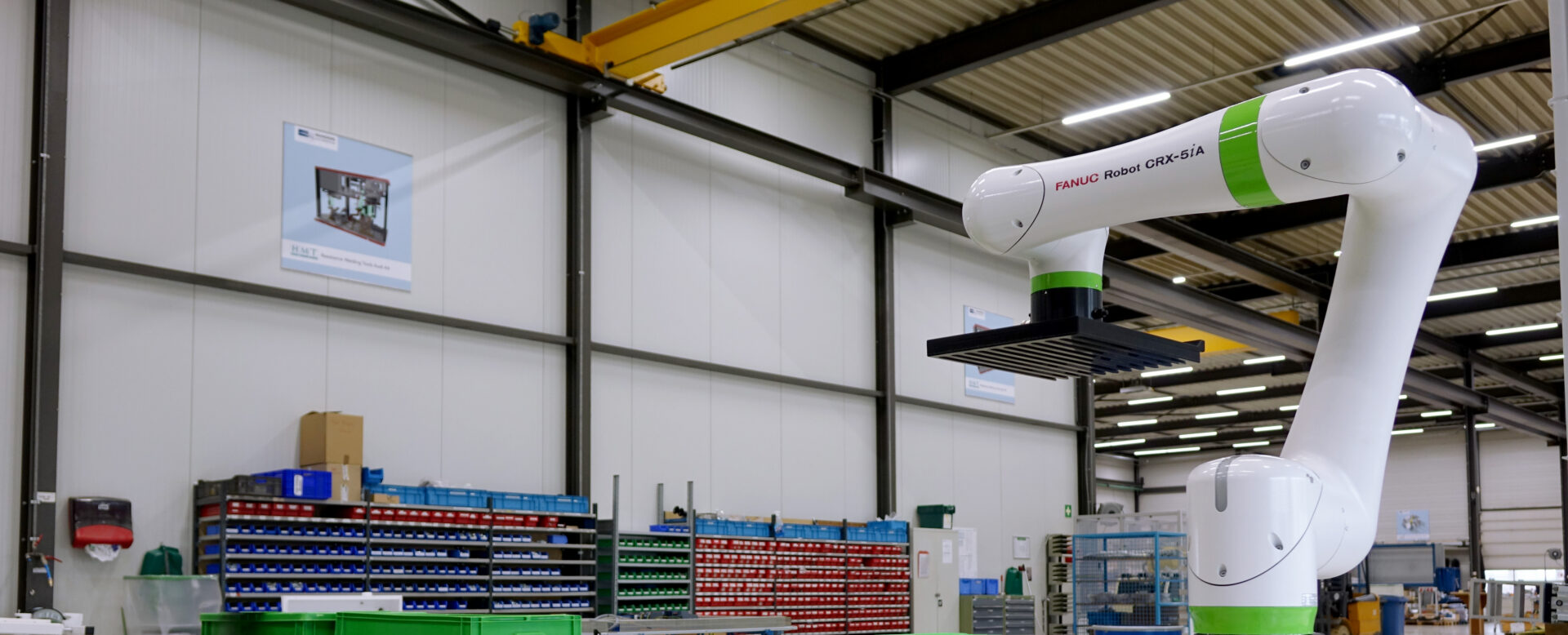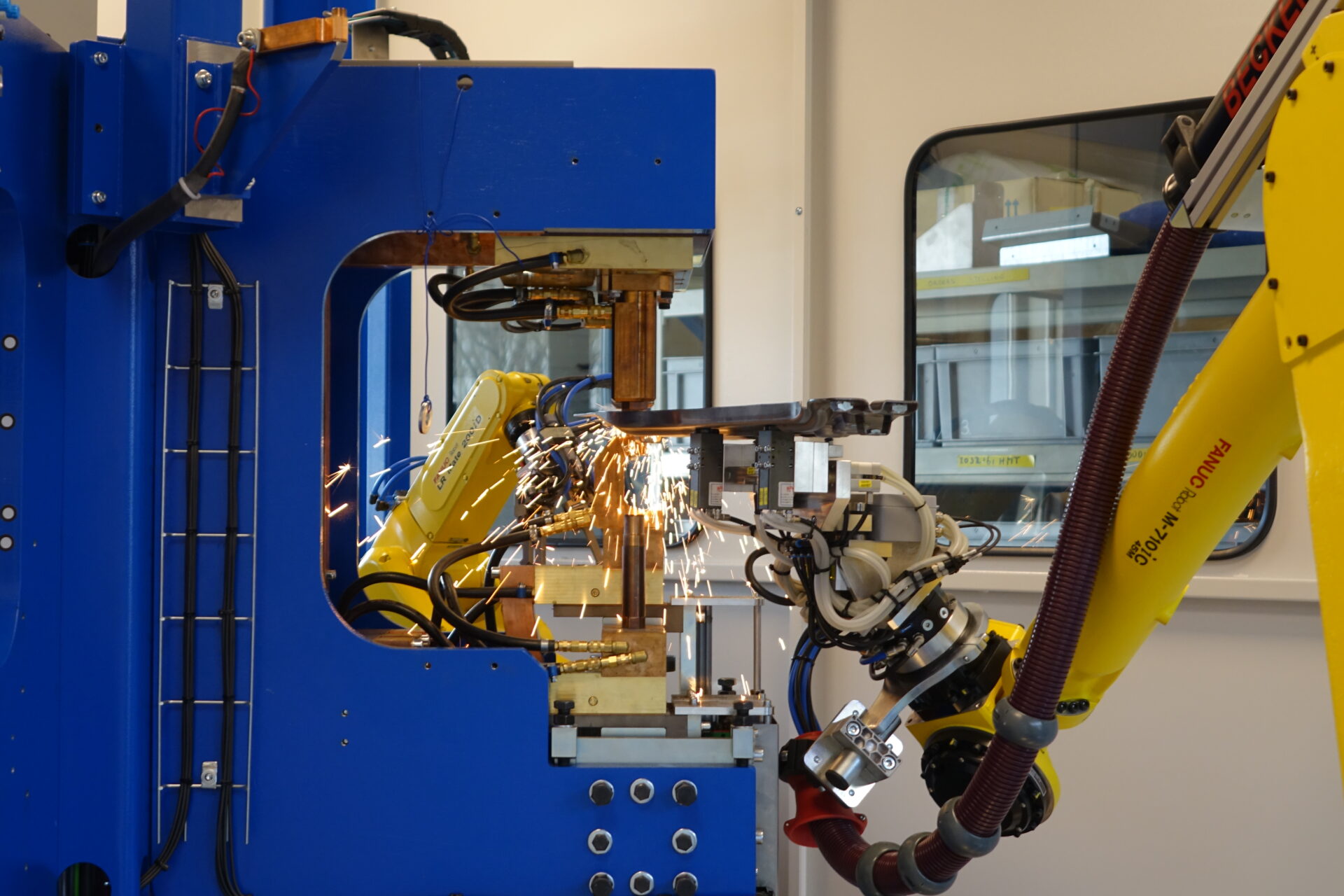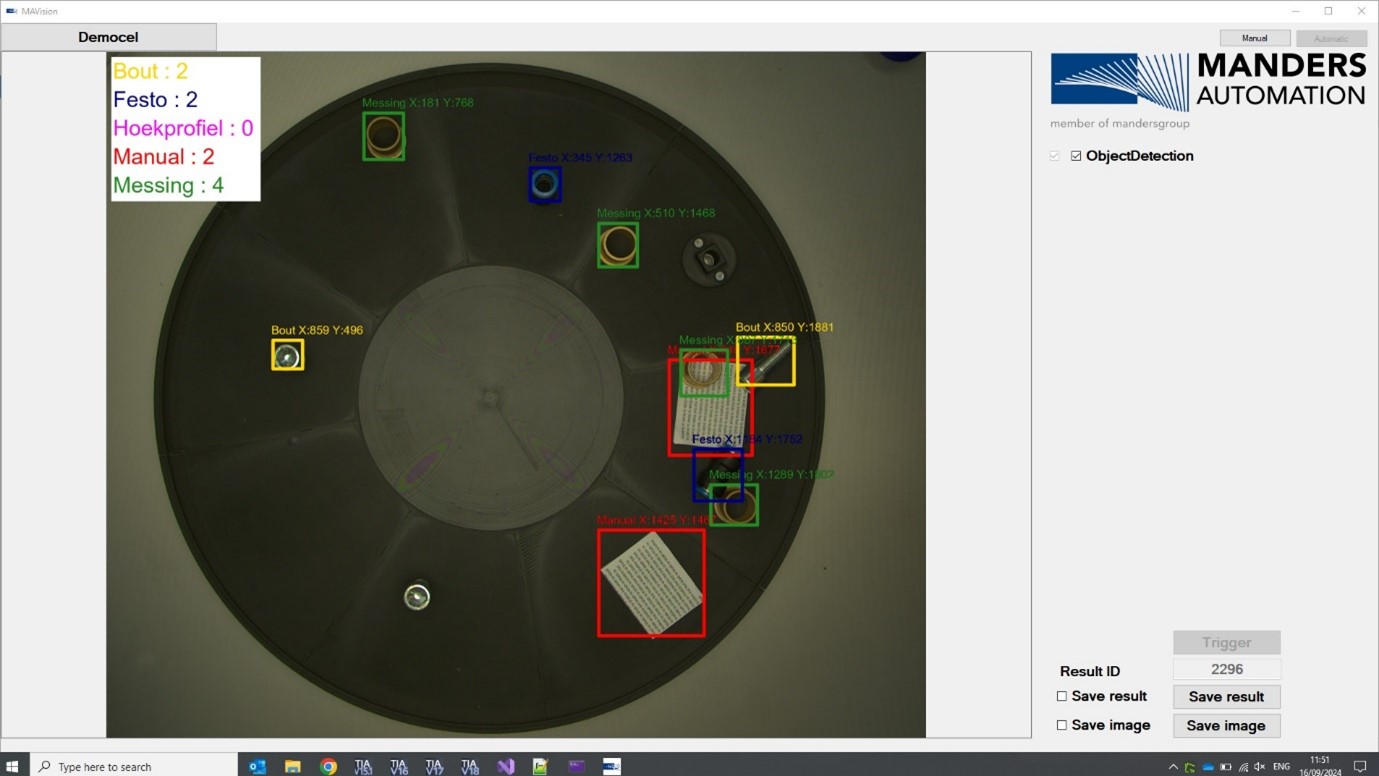The rise of collaborative robots, commonly known as cobots, is undeniable in the world of industrial automation. At Manders Automation, we see the advantages of cobots: they are relatively easy to program and, in some cases, more cost-effective than traditional robots. Despite cobots being specifically designed to safely collaborate with humans, safety is not always properly adhered to by all robot integrators. In this article, we discuss the benefits of cobots, common safety risks, and how these can be effectively managed.
Benefits of cobots
- User-friendly programming
One of the biggest advantages of cobots is their user-friendly programming. Thanks to intuitive interfaces, technicians with little to no robotics experience can quickly and efficiently create and modify programs. This speeds up the implementation process and makes it easier to adapt cobots to changing production requirements. - Cost savings
Cobots are generally less expensive to purchase and maintain than traditional industrial robots. Additionally, if the application allows, they require fewer complex and costly safety measures. This reduces the total cost of ownership, making cobots an attractive option for both large and small manufacturing companies. - Flexibility and collaboration
Cobots are designed to work alongside humans without the need for extensive safety barriers. They can be easily moved and deployed for various tasks, contributing to a more flexible, reproducible, and adaptable production environment.
Common safety risks
While cobots are inherently safer than their traditional counterparts, risks are still associated with their use. Non-compliance with safety standards by robot integrators can lead to accidents and injuries. Here are three examples of common safety risks.
- Insufficient risk analysis
A thorough risk analysis is crucial when implementing cobots. Failure to adequately identify and assess potential hazards can lead to unforeseen and dangerous situations. For example, when objects are mounted on the cobot or when it moves objects that could cause injury to the user. - Improper use of safety features
Cobots are equipped with various safety features such as force and moment limiting. These features must be properly configured and maintained. Improper use or neglecting these features can lead to situations where the cobot does not stop or slow down when needed. - Lack of operator training
Inadequate operator training can lead to unsafe working conditions. Operators must be well-versed in the functioning of cobots, potential risks, and emergency procedures. Lack of knowledge can lead to carelessness and errors that could have been avoided.

“Fortunately, there are various solutions for safety management. Think of thorough risk analysis and evaluation, proper installation and configuration, regular maintenance and inspection, extensive operator training, and the integration of safety solutions.”

Safety management solutions
Fortunately, several solutions can help manage safety. These include thorough risk analysis and evaluation, proper installation and configuration, regular maintenance and inspection, comprehensive operator training, and the integration of safety solutions.
- Thorough risk analysis and evaluation
Conducting a comprehensive risk analysis is the first step toward a safe cobot implementation. This includes identifying all potential hazards, assessing the likelihood and severity of these hazards, and implementing appropriate measures to minimize the risks. - Proper installation and configuration
Cobots must be installed and configured correctly according to the manufacturer’s guidelines and applicable safety standards. This includes setting safe speeds, force limits, and emergency stop systems. At Manders Automation, we ensure that each cobot is optimally configured for maximum safety and efficiency. In some cases, we perform impact measurements to determine whether an impact is within the permissible limits of the guidelines. - Regular maintenance and inspection
Like any other machine, cobots require regular maintenance and inspections to ensure that all safety features are functioning properly. This includes checking sensors, emergency stops, and other critical components. Preventative maintenance can help prevent failures and extend the cobot’s lifespan. - Comprehensive operator training
Operators must be thoroughly trained in the operation and safety of cobots. This includes both theoretical knowledge and practical training. Regular refresher courses are also essential to ensure that operators stay updated on the latest safety protocols and best practices. - Integration of safety solutions
In addition to the built-in safety features of cobots, additional solutions such as light curtains, area scanners, safety mats, and physical barriers can be integrated to provide an extra layer of safety. These solutions help prevent unexpected interactions between humans and machines.
Conclusion
Cobots offer significant benefits in terms of flexibility, ease of use, and potential cost savings. However, safety should always be a top priority when implementing and using them. At Manders Automation, we are committed to the highest safety standards, from thorough risk analysis to comprehensive operator training. By adopting this approach, we ensure that cobots can collaborate safely and efficiently with humans in any industrial environment.
Safety is a shared responsibility. By investing in the right safety measures and continuously promoting awareness and training, we can create a safe and productive working environment. If you have any questions or need specific solutions for your cobot implementation, please feel free to contact us. We are here to help you integrate cobots safely and efficiently into your production processes.





